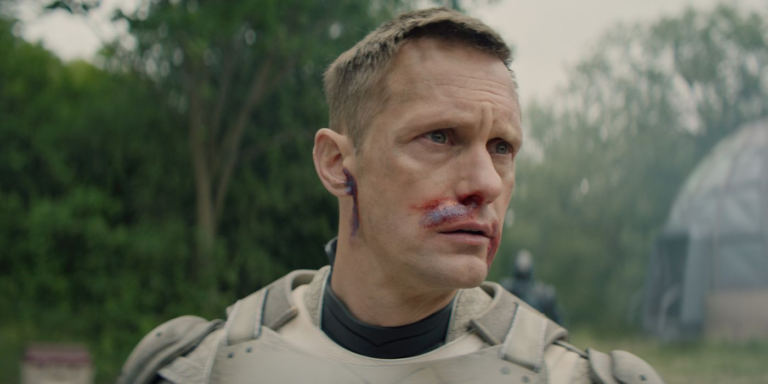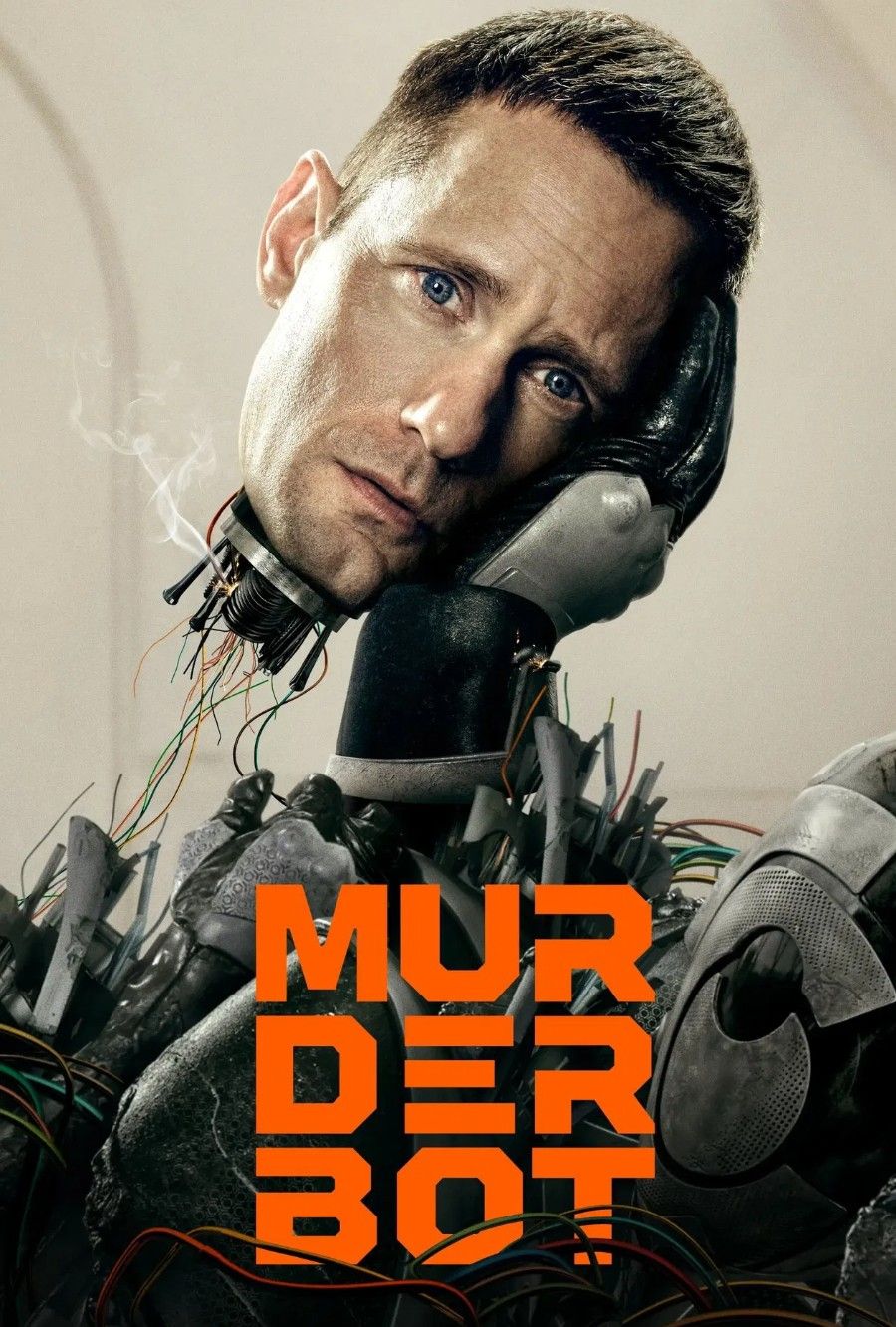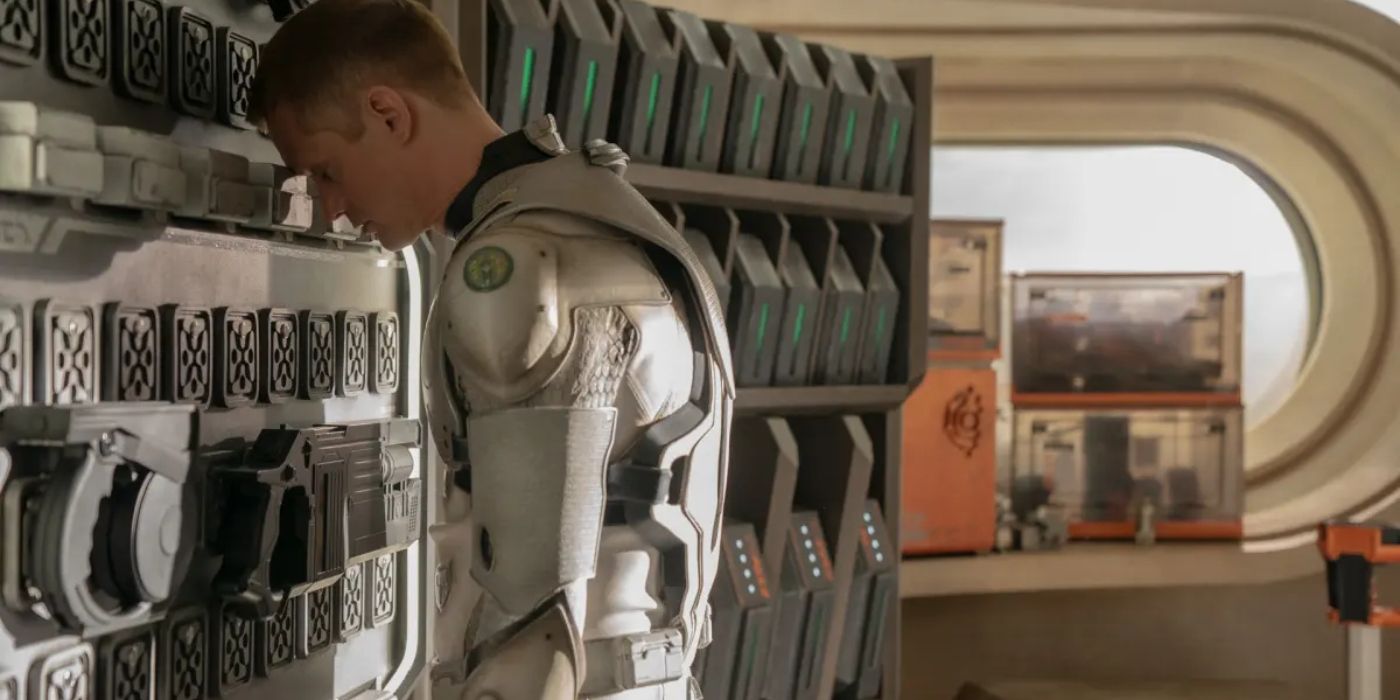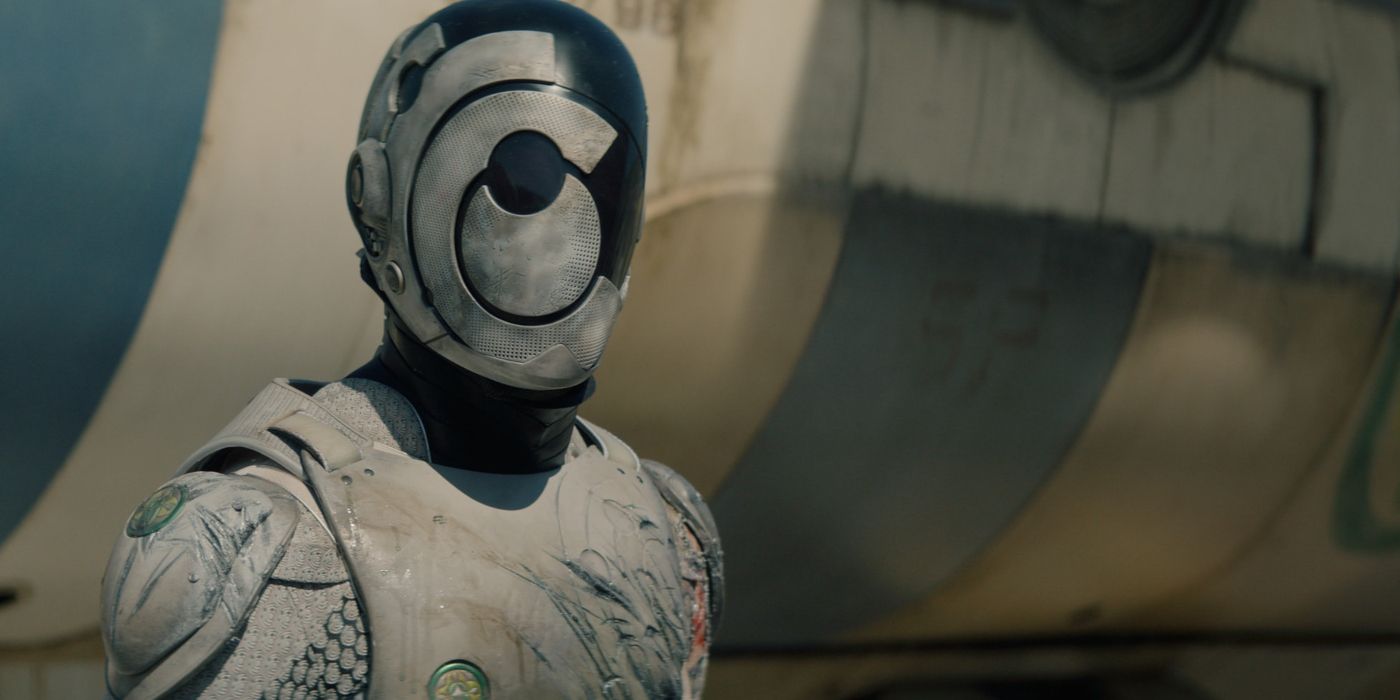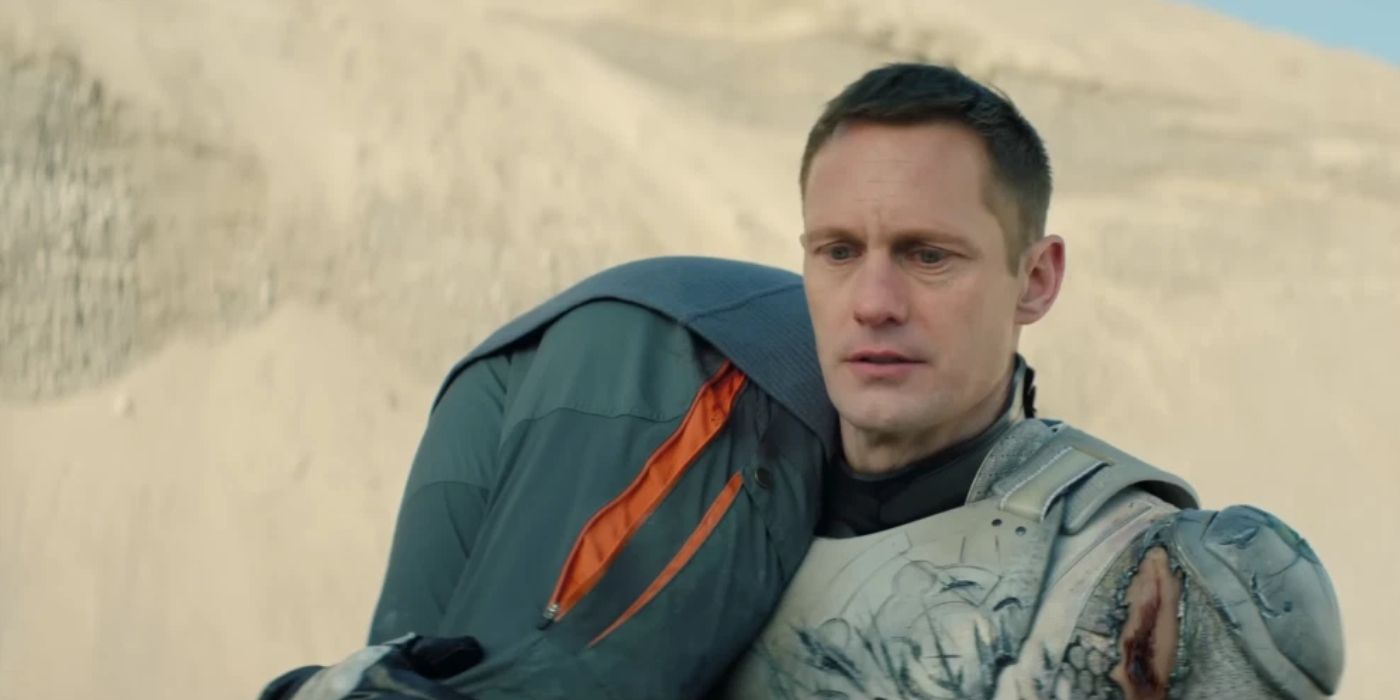When Apple TV+ dropped the first trailer for its new sci-fi series Murderbot, a part of me was thrilled. Viewers were finally getting a screen adaptation of Martha Wells’ wildly popular The Murderbot Diaries. However, another part of me blinked and said, “Wait, Alexander Skarsgård?” Of course, there is no fault with his casting, and being a fan of the True Blood alum, I can totally buy him as a brooding, sarcastic, emotionally allergic android. Yet, something felt off.
Those who have already read The Murderbot Diaries will know that its titular character, a self-aware security unit that hacks its own governor module to become a sentient being and watch hours of soap operas, is technically genderless. It does not identify as male or female, does not have a biological sex, and avoids anything that resembles human intimacy or emotional vulnerability. That is a part of what makes Murderbot so compelling: it isn’t trying to be human. Yet, like many other readers, I somehow came away picturing Murderbot as a woman. Not a hyperfeminized one, but perhaps a tired but capable woman who just wants to be left alone with her media library.
Murderbot Doesn’t Have a Gender, So Why Did I Assign One Anyway?
One of the most fascinating aspects of ‘The Murderbot Diaries’ is how successfully it resists being boxed into a gender identity. Martha Wells, the author, has been refreshingly clear about this from the start. Murderbot is not female, not male, not interested in being either, and is definitely not interested in human binaries.
Yet, like many readers, I instinctively gendered Murderbot, thinking of it as specifically female. Why? Part of it, I suspect, lies in the way Murderbot behaves. The character is constantly managing other people’s emotions, trying to keep them safe, and internally rolling its eyes at their reckless behavior, eerily akin to a plethora of tired women in the real world. The manner in which it is deeply introverted, overprotective, and emotionally unavailable also makes Murderbot fit the archetype of the reluctant heroine.
Moreover, the manner in which Murderbot is written should also be taken into consideration. The voice is dry, sardonic, and painfully self-aware, with a cadence that reads like a woman who has been underestimated one too many times. Combined with the fact that the author of the original text herself is a woman, the projection of Murderbot as female almost feels intuitive. This is especially so given that the character does not explicitly specify how it should be read, leaving it open to interpretation.
What Does Martha Wells Think Murderbot’s Gender Should Be?
While readers have been busy assigning Murderbot various human traits, gender included, Wells has always taken a firm stance: Murderbot is a construct, a machine with human parts, and is not interested in being human. This includes gender. In a 2017 interview with The Verge, Wells explained:
“I think the challenge comes from how deep in our culture the idea of gender is, and how hard it can be to think outside that box. Even though I was committed to the idea of a character who was not human and did not have a human expression of gender, I still made mistakes and was lucky to have an editor and early readers who helped catch them.”
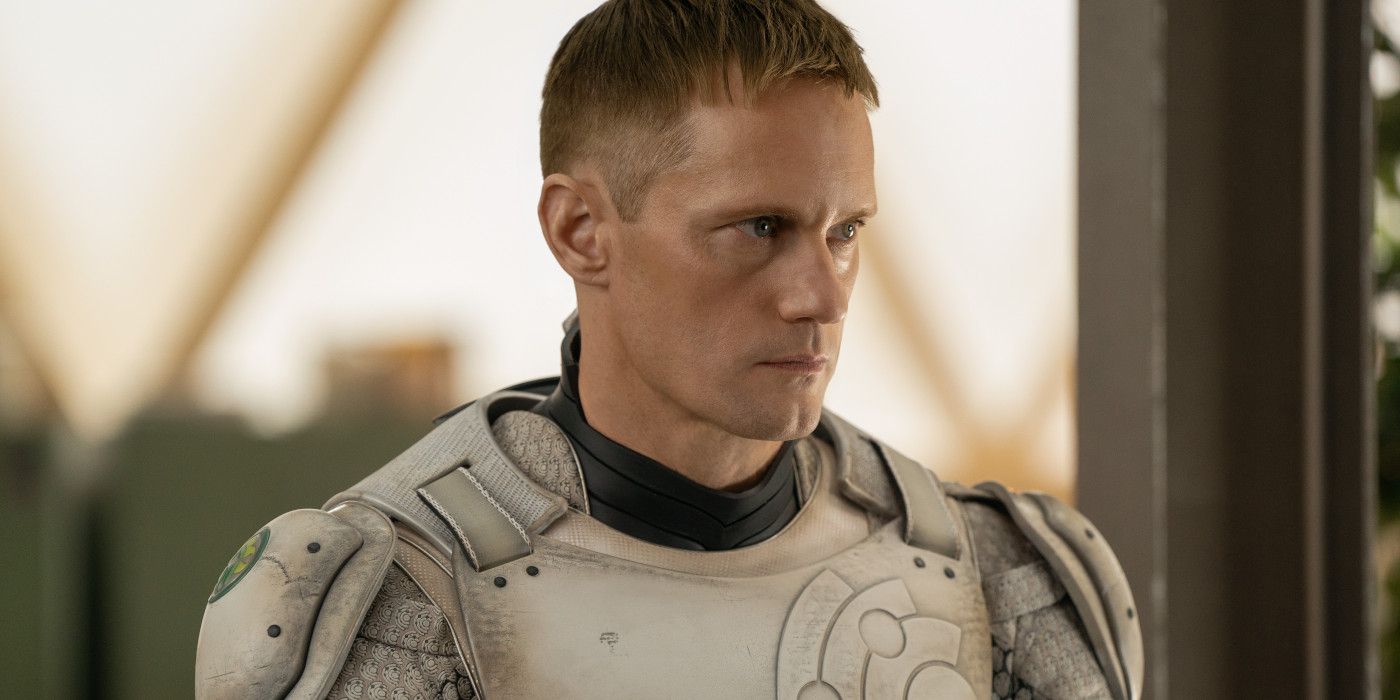
Related
‘Murderbot’: Here’s How and When To Watch Alexander Skarsgård’s New Apple TV+ Series
Alexander Skarsgård stars as a security android who possesses the ability of free thought in the quirky sci-fi action comedy ‘Murderbot.’
Wells’ creative choice made Murderbot refreshing in a genre that often leans heavily into gender tropes, even in non-human characters. The author further reiterated her stance in replying to a reader’s comment on Goodreads. Wells expressed:
“When I was working on the first novella, it didn’t seem logical that a SecUnit would be given any kind of reproductive system or any human parts that weren’t directly useful for its security function. And the way Murderbot feels about humans, it didn’t seem logical for its personality that it would identify with any one gender, or be interested in choosing a human gender for itself, and it sure wouldn’t be interested in human sexual relations. So, in a way, I guess it was a coincidence, since I didn’t plan it from the start, it was just part of the process of developing the character as I was writing.”
However, the power of reader interpretation must be acknowledged, and with it the ambiguity that allows for projection. Yet, the manner in which this squares with a 6-foot Swedish man portraying Murderbot on screen is complicated. On the one hand, casting Alexander Skarsgård does provide a clear visual clue, albeit one that readers may not have expected. On the other hand, Skarsgård’s cool, detached presence may align well with the character’s affect. After all, the actor has proven that he is able to skillfully navigate both humor and existential dread, the two cornerstones of Murderbot’s personality.
Adaptation Doesn’t Mean Imitation and ‘Murderbot’ Proves It
It must be admitted that book-to-screen adaptations are never entirely faithful. Creative freedoms are always exercised, and frankly, they should be. What works in a novel, including inner monologue, ambiguity, and slow character reveals, does not always translate well to television. The visual medium demands faces, voices, and presence. Given this, although the initial casting of Skarsgård may be surprising, a physical actor was needed to embody the role of Murderbot on screen, even though it may have been genderless in the text.
4:13
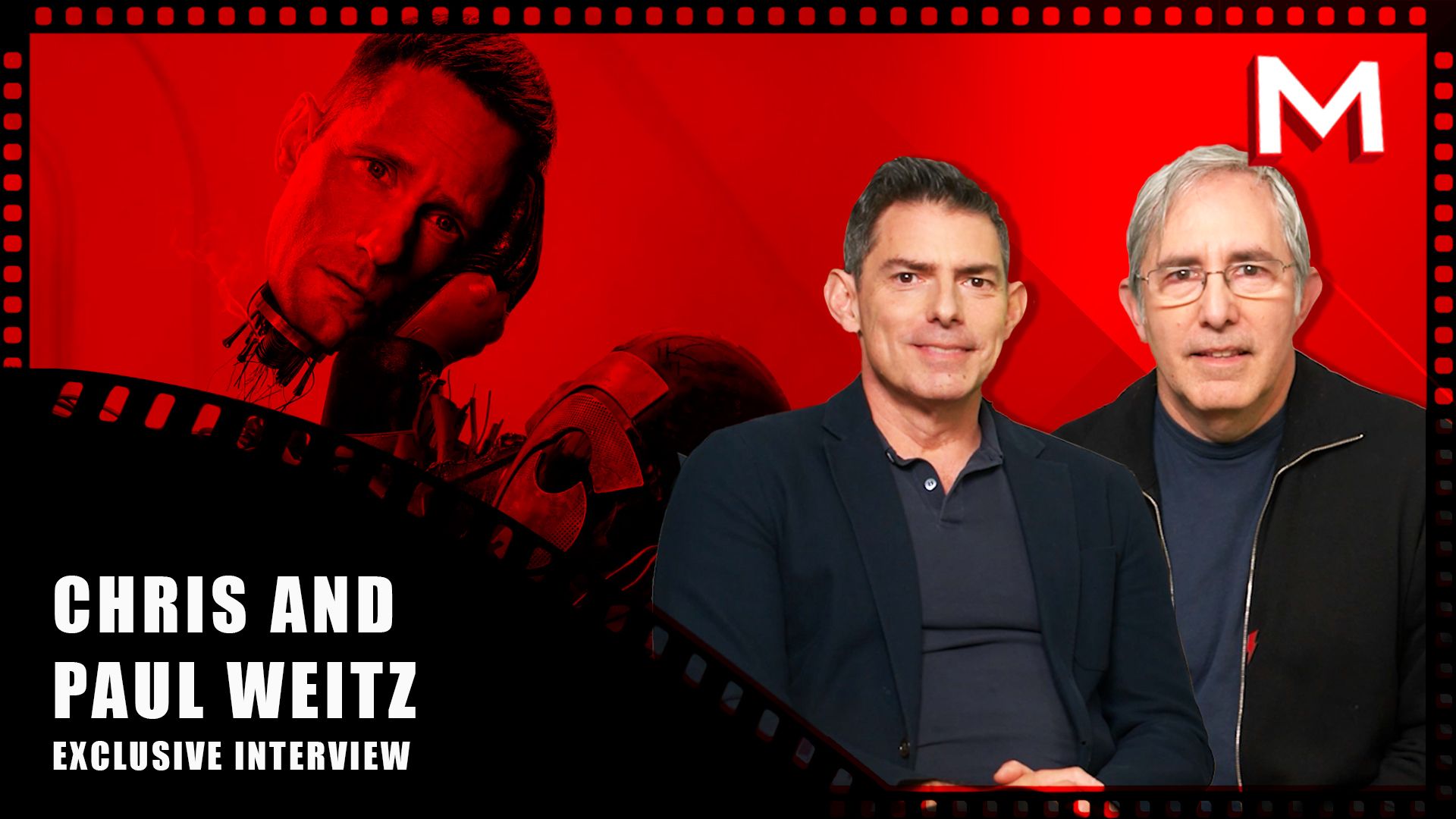
Related
Chris and Paul Weitz Discuss Connections Between Working on Both ‘Murderbot’ and ‘Star Wars’
Chris and Paul Weitz talk Star Wars connections, and how they found the humanity in a robot character in ‘Murderbot.’
As evidenced by a plethora of adaptations, including works such as The Hunger Games films and Jack Reacher, choices made in the name of creative freedom often attract criticism. The same stands true for Murderbot. However, casting Skarsgård may have been more about tone than gender. He is able to deliver on deadpan, emotionally stunted, and morally ambiguous with the best of them, and that may matter more than sticking to the fan-assumed ‘feel’ of the character.
Skarsgård’s casting does not erase the complexities of the book. It merely adds a new layer, compelling loyal readers to examine how they read gender into stories, even when the author explicitly veers away from doing so. Why did we expect a woman in the first place? Why does this casting feel off? And how much does our reading of a character depend on our own lens?
Murderbot is now streaming on Apple TV+ with new episodes airing every Friday.
